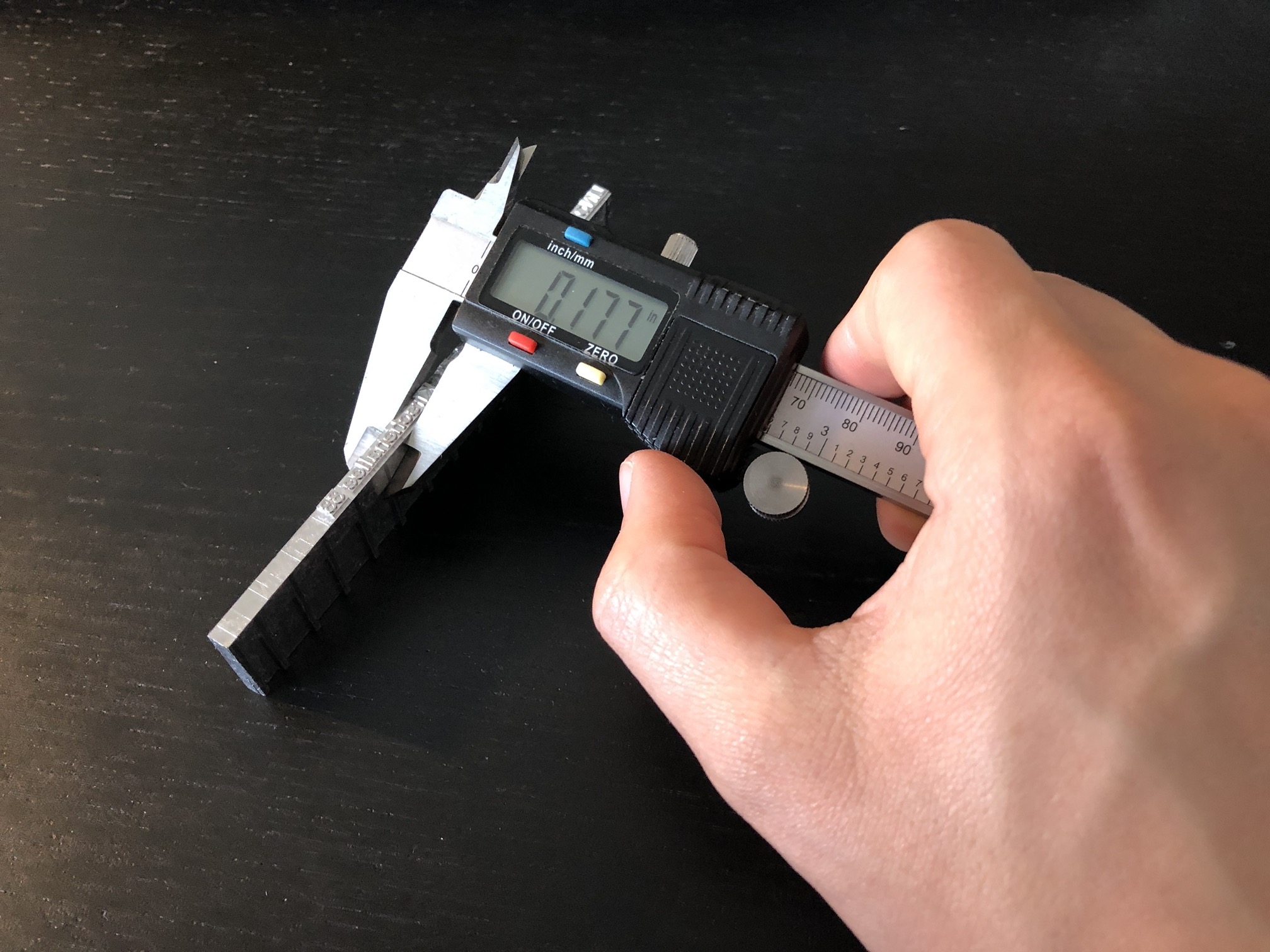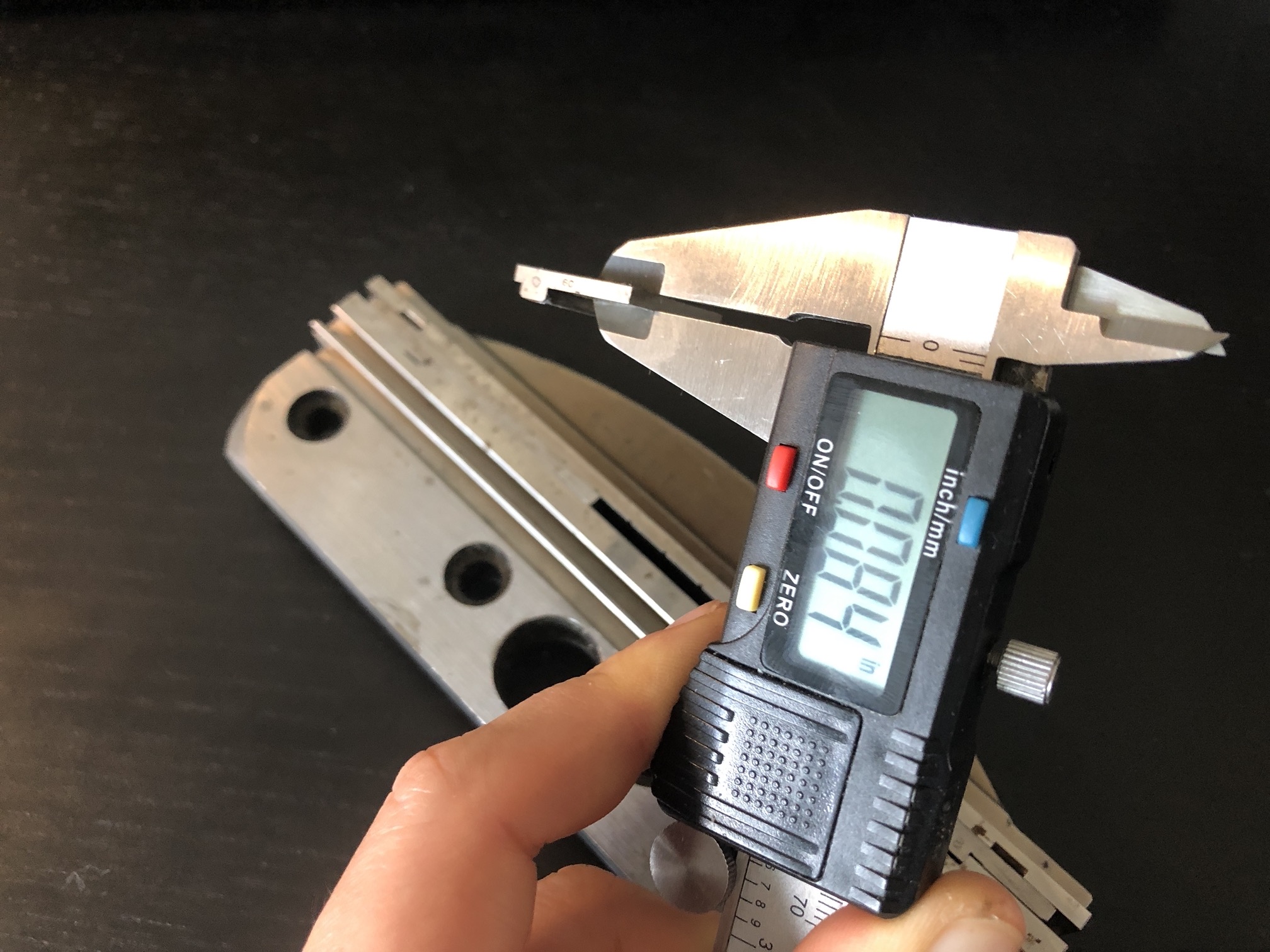Linotype and Intertype machines differed per country. One of the differences was that the slugs they produced had different dimensions. On this page, the different dimensions are explained.
The Intertype Corporation (n.d.; 1929) provided the information about the different units of measurement that are in use. Note that Intertype relied on the Linotype Points, which was a rounded number of the historical points. For clarity we added the historical points.
| Em | .166 2/3" |
| Cicero | .178" |
| Fournier | .16476" |
| Petit | .1115" |
| Point [historical] | .0138 1/3" |
| Point [Linotype] | .014" |
| Didot | .0148 1/3" |
| Point Fournier | .01373" |
Based hereupon, Intertype provides the following calculations:
The Cicero is a unit of measurement used in Europe.
A point, American system, measures .014 inches.
An em, American system, measures .1666 inches.
A point, European system, measures .0148 1/3 inches.
An em, European system, measures .178 inches.
Therefore, a 30-em slug in America would be equivalent to a 28 cicero slug in Europe.
The slug's thickness varies depending on the type size used.

Within the machine, the slugs are cast within the mold. How thick the space within the mold is, is determined by two liners at both sides of the mold. When an operator wanted to use a different type size, the operator had to open the machine in order to replace the liners. The point size is engraved on the liners, so no mistake can be made.


The type size on the slug is expressed in different measurement systems, which differs per country:
| AMERICAN DIMENSIONS | EUROPEAN DIMENSIONS | |||||||||||||
| (1 point = approx. 0.0138 1/3 inch) | (1 point = 0.0148 inch = 0.37583 mm) | |||||||||||||
| Points | American | Inch | Inch | Belgian | Dutch | German | Inch | mm | ||||||
| names | (Linotype) | (Standard) | names | names | names | |||||||||
| — | ||||||||||||||
| 5 | Pearl | 0.070 | 0.06920 | 0.074 | 1.88 | |||||||||
| 5 1/2 | Agate | 0.077 | 0.07612 | |||||||||||
| 6 | Nonpareil | 0.084 | 0.08304 | Nonparel | Nonpareille | 0.089 | 2.25 | |||||||
| 7 | Minion | 0.098 | 0.09688 | Colonel | Kolonel | 0.104 | 2.63 | |||||||
| 8 | Brevier | 0.112 | 0.11072 | Galjard | Petit | 0.119 | 3.00 | |||||||
| 9 | Bourgeois | 0.126 | 0.12456 | Garmon | Borgis | 0.133 | 3.38 | |||||||
| 10 | Long Primer | 0.140 | 0.13840 | Dessend | Korpus | 0.148 | 3.76 | |||||||
| 11 | Small Pica | 0.154 | 0.15224 | Mediaan | 11 Punkte | 0.163 | 4.13 | |||||||
| 12 | Pica | 0.168 | 0.16608 | Cicero | Augustijn | Cicero | 0.178 | 4.51 | ||||||
| 13 | 13 punte | 13 Punkte | 0.193 | 4.89 | ||||||||||
| 14 | English | 0.196 | 0.19376 | 14 punte | Mittel | 0.208 | 5.26 | |||||||
| 16 | Columbian | 0.224 | 0.22144 | |||||||||||
| 18 | Great Primer | 0.252 | 0.24912 | |||||||||||
| 20 | Paragon | 0.280 | 0.27680 | |||||||||||
| 24 | Double Pica | 0.336 | 0.33216 | |||||||||||
| 30 | Five-line Nonpareil | 0.420 | 0.41520 | |||||||||||
| 36 | Double Great Primer | 0.504 | 0.49824 | |||||||||||
The following calculations were used:
Also the lug's height was different per country.

Here are some of the documented heights:
| Points | Inch | mm | |
|---|---|---|---|
| American | 23.32 | ||
| Belgian | 23.86 | ||
| Dutch | 66,125 | 0.979 | 24.85 |
| French (/European) | 62,7 | 0.928 | 23.56 |
| English | 62,03 | 0.918 | 23.31 |
With 1 point = 0.0148 inch = 0.37583 mm. The Dutch, French and English height are based on Adams (1996), De Jong (1947). The other heights came from a nameless source.
Keep in mind that the height of the slug is not completely determined by the thickness of the mold inside the machine. While the largest part of the slug is cast within the machine, the top of it is formed within the matrices.

The following sources were consulted to create those tables:
c 2022 Maarten Renckens. All rights reserved.